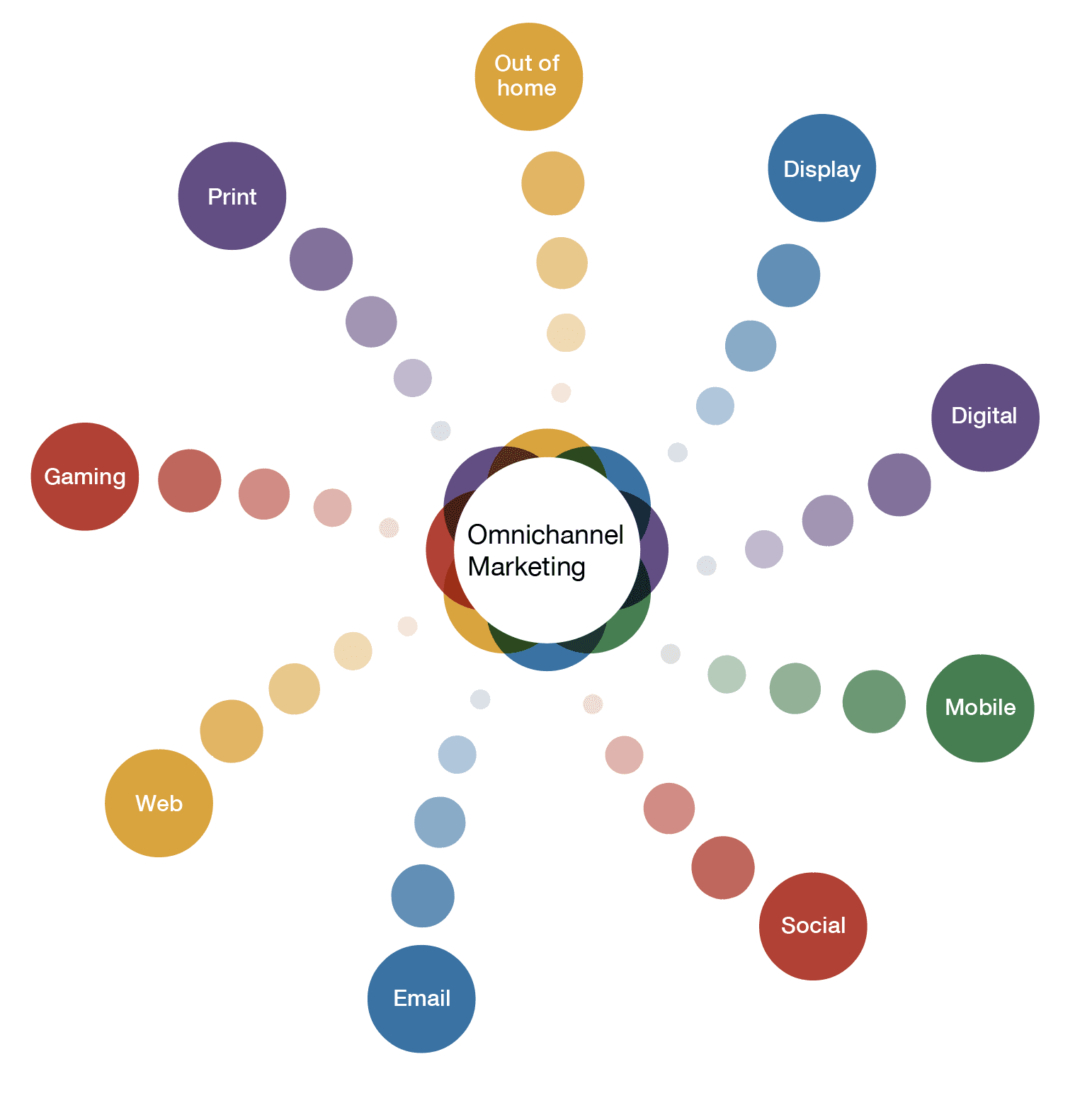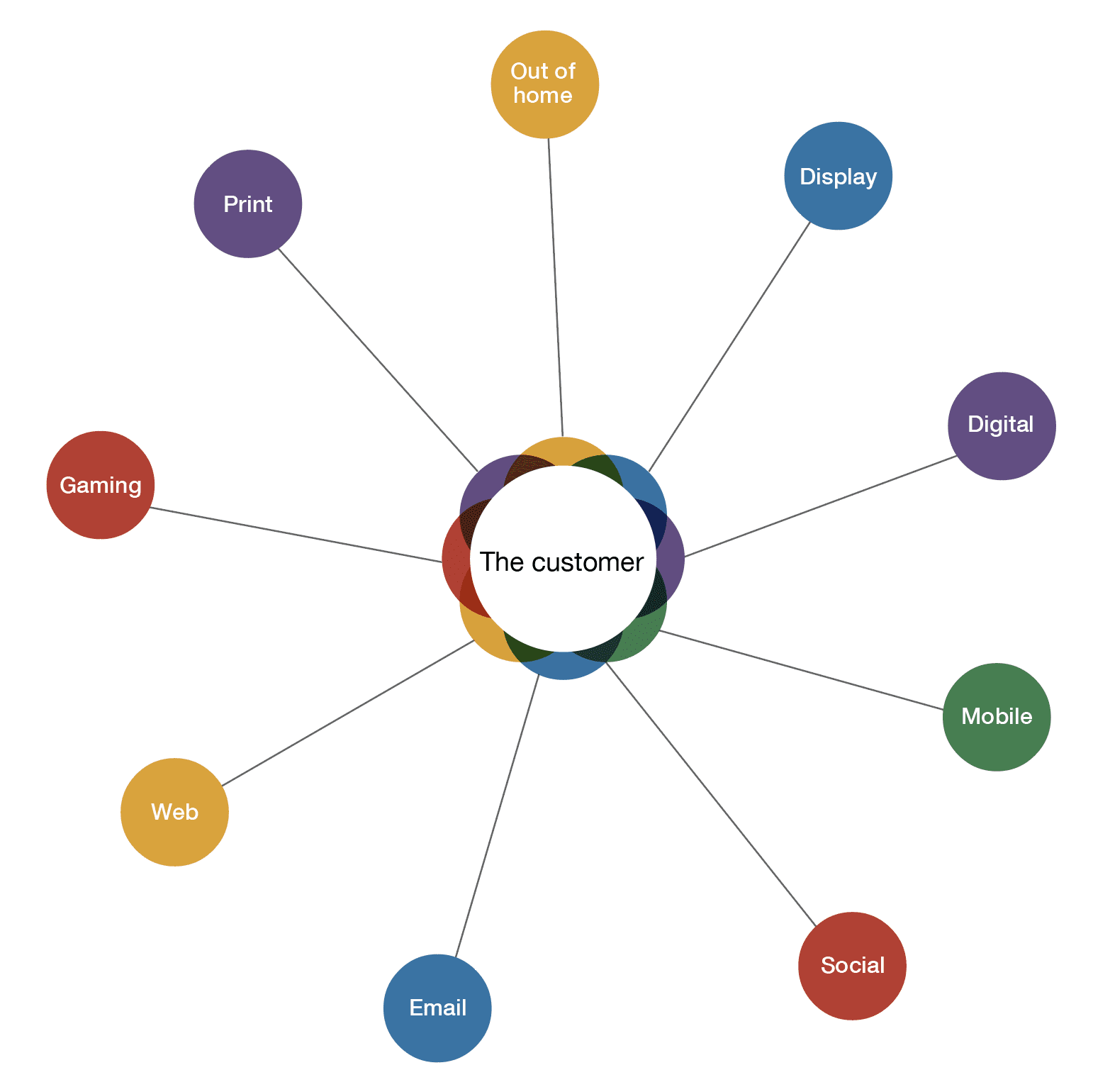The promise of omnichannel was that people would connect to a brand digitally or physically and then feel continuity in each subsequent interaction. For the most part, omnichannel hasn’t delivered that
If you want to understand how omnichannel marketing fails, picture yourself in a funhouse surrounded by mirrors. In every direction, you see your reflection in distorted shapes and sizes. The mirrors change appearances, not who you are and what you believe. But if you spend too much time in front of the mirrors – social networks, blogs, or wherever you present your brand – you can become disoriented and so can your customers.
The promise of omnichannel was that people would connect to a brand digitally or physically and then feel continuity in each subsequent interaction. For the most part, omnichannel hasn’t delivered that. More likely, you enter your email address to read a vendor’s research report, you get hammered with impersonal emails and then get a generic email from a salesperson who doesn’t know how the brand captured your information or why you gave it.
The result is that omnichannel marketing feels disjointed to the customer and unmanageable to the marketer. The whole point was to be wherever your potential buyers “hang out.” Instead, the marketers are lost in their own funhouse, comforted social vanity metrics, click/open rates and conversion measurements.
Sound familiar? Let’s rethink the meaning of “omnichannel” to get some better results.

Don’t take “omni” too literally
Buzzwords like “omnichannel” are designed to sell things. It’s a marketing term, which means that it takes on whatever definitions help companies market “omnichannel” technology. One definition insists that marketers spread their “integrated digital experience” or “unified brand experience” (choose your preferred jargon) onto as many channels as possible. It’s misguided.
Consider Trader Joe’s, which has the highest sales per square foot of any grocery chain in America. In November, Stephen Dubner’s Freakonomics podcast asked, “Should America Be Run By…Trader Joe’s?” The episode tried to dissect what made TJ’s so successful.
“…Trader Joe’s seems to be aggressively low-tech,” notes Dubner. “No self-checkout aisles. No online ordering and pickup. No customer-loyalty programs and, apparently, Trader Joe’s gathers no significant data on customers at all. In the modern business world, this is heresy.”
Dubner interviews an advertising executive named Mark Gardiner who took a job at Trader Joe’s because he was perplexed by their success. He tells Dubner, “They don’t market. They have a pretty good website now. But for years they had a rudimentary website. They had almost no social media presence. They had almost no kind of public relations.”
Is TJ’s unichannel or anti-omnichannel? Why is their “heresy” so effective?
A different interpretation of omni
If we apply the funhouse analogy, TJ’s figured out that shoppers don’t want the 20 mirrors that they could see in every funhouse. They a took a much more imaginative approach to what a “channel” is.
At TJ’s, the team members stocking shelves are arguably a channel. They do it during the daytime to “maximize interactions with customers,” says Dubner. They staff extra employees in the checkout area for the same reason. Kind, enthusiastic people are a channel.
TJ’s old-school paper news bulletin, The Fearless Flyer, is an odd channel in the digital age. What about their wildly unusual product selection – like the new Dark Chocolate Sunflower Seed Butter Cups or Jackfruit Cakes – with well-written descriptions? Channel.
Most stores think of their brick-and-mortar stores as one channel. TJ’s, intentionally or not, figured out that a store could be so much more. Why not make every person, product, sign, and mural a channel? It sounds difficult, and maybe that’s why no one else can touch TJ’s sales per square foot.

What about B2B omnichannel?
If you’re a B2B marketer, maybe you’d argue that TJ’s isn’t an applicable example. You’re sick of all those B2B commentators who put consumer brands on a pedestal and tell you to emulate them. How are we supposed to make tech platforms as enticing as Peanut Butter Filled Pretzels?!
Notice that B2C brands are almost never shy about selling you something. There’s no pretense of giving “tips” that inevitably conclude with reasons to buy their product. The price of consumer products doesn’t change that. Jeep doesn’t give tips for driving in the snow that say you need to buy a four-wheel-drive car – like a Jeep.
Maybe omnichannel is failing some B2B marketers because they’re so coy about selling their own product. Maybe they just need to say, without varnish, what’s in it for the customer. I say “maybe” because, like TJ’s, you need to figure out what your competitors aren’t doing.
An omnichannel strategy is supposed to differentiate your brand from competitors, but usually, it makes brands indistinguishable. Content marketing, for example, promotes content that tries to avoid seeming sales-focused. However, when brands fight for the same SEO keywords and write the same blog headlines, no one is fooled. No brand stands out.
If your omnichannel strategy is a mirror-image of everyone else’s, it’s not really a strategy. Maybe the most surprising, unusual, endearing thing you could do is create channels that make it darn clear you want to sell something.
A funhouse for who?
More broadly, the lesson from Trader Joe’s is to make one channel into an omnichannel. It’s not about being everywhere. It’s about deepening one channel into that continuous, personal experience that doesn’t get tainted by scattershot emails and retargeting ads.
The temptation of running conventional omnichannel strategies is the data. We know if we use a major ad platform, we’ll find out how the ads performed. It helps us justify our jobs and budgets.
We can and should use major social platforms and ad platforms. At the same time, let’s use the data from those laboratories to try experiments that are hard to quantify but even harder for your competitors to replicate.
Acting up
Now that I’ve asked you to rethink the meaning of omnichannel, how might you apply this information?
Pay attention to your channels
Stop sending mass spam-mail to people who are already in conversations with your salespeople. It’s ok to “turn off” a channel once it’s no longer relevant. To go from one-on-one conversation back to email blasts feels like a step in the wrong direction.
What if you send the same information from a personal email account instead of a mass email service? It might feel helpful rather than annoying. That’s the power of channels.
Make your website more engaging
Do something on your website that isn’t possible in third-party channels. Everyone has a blog, product pages, demo videos, etc. What can you provide that singles you out for consideration?
There’s a section on The Boring Company’s website titled “Flamethrower.” Last year, Elon Musk’s company sold 20,000 “Not-A-Flamethrowers” at $500 a pop in 100 hours, raking in about $10 million (yes, these shoot fire). Mind you, The Boring Company is supposed to be making tunnels for autonomous vehicles. They’re B2B and biz-to-government company.
Assess channel performance
Cut off channels where you feel like you’re doing a mediocre job. “Being everywhere your customers are” can backfire because you’ll never keep up and there will always be a newer, cooler place. Channels are supposed to be business tools, not nightclubs.
For example, some companies look like they hate blogging. They add entries inconsistently and it feels like the writer drew the short straw then wrote one draft and didn’t edit it. Why bother? Just because blogs are common channels that work for some companies, it might not work for your brand. Be “omni” in another channel where your team feels motivated.
Final thoughts
We went from funhouses to Trader Joe’s to Elon Musk’s flamethrowers. No, I wasn’t trying to win a bet with my team. B2B marketing is little too bottled up these days. It’s affecting how we think of our brands and represent them to the public. Let’s rethink omnichannel and come back with a bit of spirit and fire.
